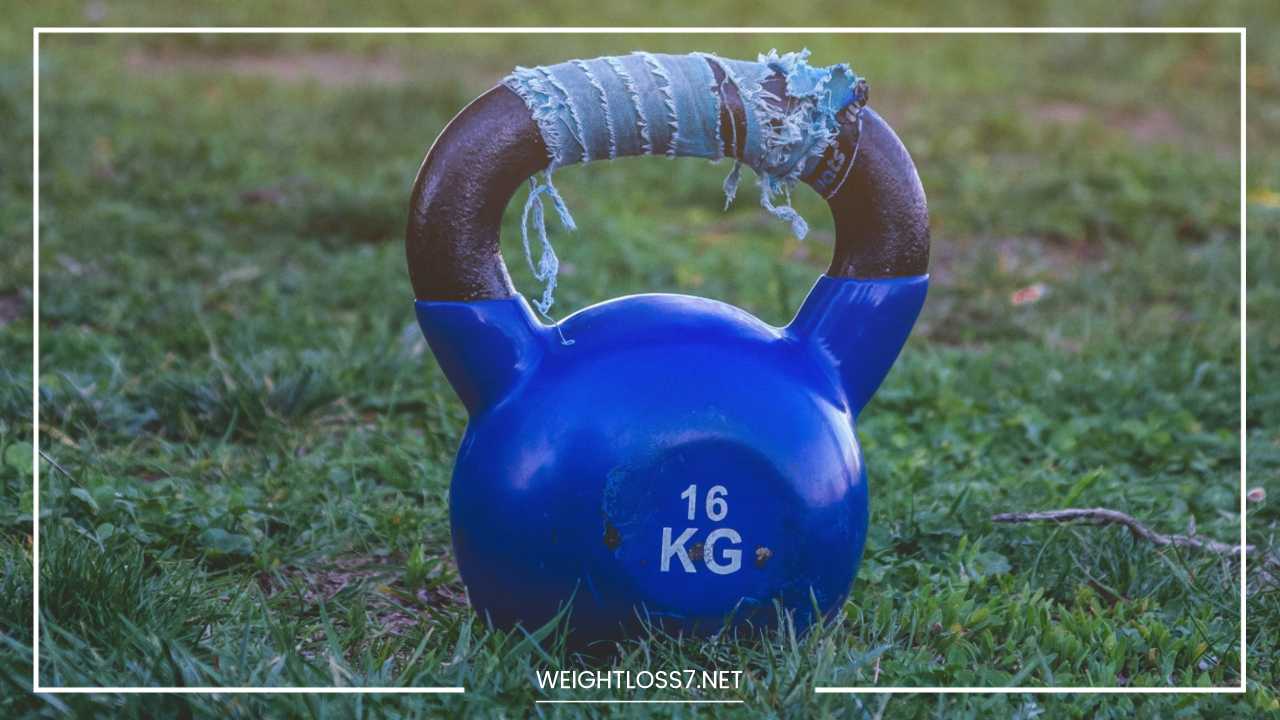How to Lose Weight in a Month: A Sustainable Approach to Achieving Your Health

How to Lose Weight in a Month
Losing weight is a common goal for many individuals seeking to improve their overall health and well-being.
While it’s important to approach weight loss with a focus on long-term health rather than quick fixes, there are strategies that can help you shed those extra pounds in a month.
In this comprehensive guide, we will explore effective and sustainable methods for achieving your weight loss goals within a one-month timeframe.
1: Setting Realistic Goals
Before embarking on a weight loss journey, it’s crucial to set realistic and achievable goals. The key is to aim for gradual and steady weight loss rather than rapid, unsustainable results.
While the ideal rate of weight loss varies from person to person, losing 1 to 2 pounds (0.45 to 0.9 kilograms) per week is generally considered safe and sustainable. Over the course of a month, this equates to 4 to 8 pounds (1.8 to 3.6 kilograms) of weight loss.
Setting realistic goals involves considering various factors, including your starting weight, age, activity level, and metabolism. It’s essential to understand that weight loss is not a linear process; there may be weeks when you lose more or less than the average.
To track your progress effectively, consider using a journal or weight loss app to record your daily food intake, exercise routines, and measurements.
2: Creating a Calorie Deficit
Weight loss fundamentally boils down to the concept of calories in versus calories out. To lose weight, you need to create a calorie deficit by consuming fewer calories than you expend. Calculating your daily calorie needs is a crucial step in this process.
You can use online calculators or consult with a registered dietitian to determine your maintenance calorie level based on your age, gender, weight, height, and activity level.
Once you have your maintenance calorie level, aim to eat slightly fewer calories to create a calorie deficit. However, be cautious not to drastically reduce calories, as this can slow down your metabolism and lead to muscle loss.
A moderate calorie deficit of 500 to 750 calories per day can lead to a safe and sustainable weight loss of about 1 to 1.5 pounds (0.45 to 0.68 kilograms) per week.
3: Adopting a Balanced Diet
The foundation of any successful weight loss plan is a balanced and nutritious diet. Your diet should provide essential nutrients while helping you maintain a calorie deficit. Here are some key principles to consider:
- Focus on Whole Foods: Whole foods like fruits, vegetables, lean proteins, whole grains, and healthy fats should make up the majority of your diet. These foods are nutrient-dense and can help you feel full and satisfied.
- Limit Processed Foods: Processed foods, which often contain added sugars, unhealthy fats, and empty calories, should be limited or avoided.
- Pay Attention to Portion Control: Be mindful of portion sizes to prevent overeating. Use smaller plates and utensils to help control portion sizes and reduce calorie intake.
- Balance Macronutrients: Your diet should include a balance of carbohydrates, protein, and healthy fats. Protein can help you feel full and preserve lean muscle mass, while healthy fats provide essential nutrients and support overall health.
- Stay Hydrated: Drinking plenty of water throughout the day can help control hunger and support your metabolism. Sometimes, thirst can be mistaken for hunger, leading to unnecessary snacking.
4: Practicing Mindful Eating
Mindful eating is a technique that encourages you to pay full attention to your meals, savor each bite, and listen to your body’s hunger and fullness cues.
By eating mindfully, you can reduce overeating and make healthier food choices. Here are some tips for practicing mindful eating:
- Eat Without Distractions: Avoid distractions like television, smartphones, or work while eating. Instead, focus on the sensory experience of your food.
- Chew Slowly: Chew your food thoroughly and savor the flavors and textures. This not only helps with digestion but also allows you to enjoy your meal more fully.
- Listen to Your Body: Pay attention to hunger and fullness cues. Eat when you’re hungry and stop when you’re satisfied, not overly full.
- Be Present: Be mindful of the emotions and thoughts associated with eating. Emotional eating can lead to overconsumption of calories, so it’s essential to address the underlying triggers.
5: Incorporating Regular Exercise
Physical activity is a crucial component of any weight loss plan. It not only helps you burn calories but also improves your overall fitness and well-being. Here are some tips for incorporating exercise into your routine:
- Cardiovascular Exercises: Include activities like walking, jogging, cycling, swimming, or dancing to increase your heart rate and burn calories.
- Strength Training: Incorporate weight lifting, bodyweight exercises, or resistance training to build lean muscle mass. Muscle burns more calories at rest, contributing to a higher resting metabolic rate.
- Create a Workout Schedule: Plan your workouts and stick to a regular schedule. Consistency is key when it comes to reaping the benefits of exercise.
- Mix It Up: Variety in your exercise routine can prevent boredom and plateaus. Try different activities to keep things interesting and challenging.
- Listen to Your Body: Pay attention to how your body responds to exercise and adjust your routine as needed. Rest and recovery are crucial to prevent burnout and injuries.
6: Prioritizing Sleep
Quality sleep is often overlooked but plays a significant role in weight management. Lack of sleep can disrupt hormones that regulate hunger and appetite, leading to increased cravings for unhealthy foods.
Aim for 7-9 hours of quality sleep per night to support your weight loss efforts. Here are some tips for improving your sleep:
- Create a Relaxing Bedtime Routine: Establish a calming pre-sleep routine to signal to your body that it’s time to wind down.
- Limit Screen Time: Avoid screens (phones, tablets, computers, and TVs) at least an hour before bedtime, as the blue light emitted can interfere with your sleep-wake cycle.
- Keep Your Sleep Environment Comfortable: Ensure your bedroom is dark, quiet, and at a comfortable temperature.
- Manage Stress: Stress can interfere with sleep. Practice stress-reduction techniques such as meditation, deep breathing, or progressive muscle relaxation.
7: Managing Stress
Chronic stress can lead to emotional eating and weight gain. Finding healthy ways to manage stress is crucial for your overall well-being and weight loss success. Here are some stress management techniques to consider:
- Meditation and Mindfulness: Meditation practices can help calm the mind and reduce stress. Mindfulness meditation, in particular, encourages you to stay present and non-judgmental in the moment.
- Deep Breathing Exercises: Simple deep breathing exercises can help activate the body’s relaxation response and reduce stress levels.
- Yoga: Yoga combines physical postures, breathing exercises, and meditation to promote relaxation and reduce stress.
- Hobbies and Relaxation: Engage in hobbies or activities that bring you joy and relaxation, whether it’s reading, painting, gardening, or spending time in nature.
- Seek Support: If stress becomes overwhelming, consider seeking support from a mental health professional or counselor.
8: Staying Consistent
Consistency is key when it comes to losing weight in a month. Stick to your calorie deficit, exercise routine, and healthy eating plan. Avoid fad diets or extreme restrictions that are difficult to sustain over the long term.
Remember that weight loss is a gradual process, and there may be fluctuations along the way. Here are some tips for staying consistent:
- Plan and Prepare: Plan your meals and snacks ahead of time to avoid impulsive, unhealthy choices.
- Set Reminders: Use reminders or alarms to prompt you to exercise or eat meals at regular intervals.
- Track Your Progress: Continuously monitor your progress through journaling, measurements, or photos. Celebrate your achievements along the way, whether it’s hitting a weight loss milestone or making healthier food choices.
- Stay Accountable: Share your goals with friends or family members who can provide encouragement and accountability. Consider joining a weight loss group or working with a registered dietitian or personal trainer for personalized guidance.
9: Tracking Your Progress
Monitoring your progress can help you stay motivated and accountable. Keep a food journal to track your meals and snacks, as well as your physical activity.
Consider taking regular measurements or photos to visually track your changes. Celebrate your achievements along the way, whether it’s hitting a weight loss milestone or making healthier food choices.
Tracking your progress can also help you identify areas where you may need to make adjustments to stay on track.
10: Seeking Support
Weight loss can be challenging, and it’s helpful to have a support system in place. Share your goals with friends or family members who can provide encouragement and accountability.
Consider joining a weight loss group or working with a registered dietitian or personal trainer for personalized guidance. Having a support network can make a significant difference in your motivation and success.
Final Thoughts
Losing weight in a month is a realistic goal if approached with a sustainable and balanced approach. Remember that the journey to better health is not just about the number on the scale but also about making positive, long-lasting lifestyle changes.
By setting realistic goals, creating a calorie deficit, adopting a balanced diet, and incorporating regular exercise, you can achieve your weight loss objectives while promoting your overall well-being.
Stay consistent, practice mindful eating, manage stress, and seek support when needed to make your weight loss journey a successful and fulfilling one.
With dedication and perseverance, you can achieve your health and fitness goals and enjoy the benefits of a healthier lifestyle.

















